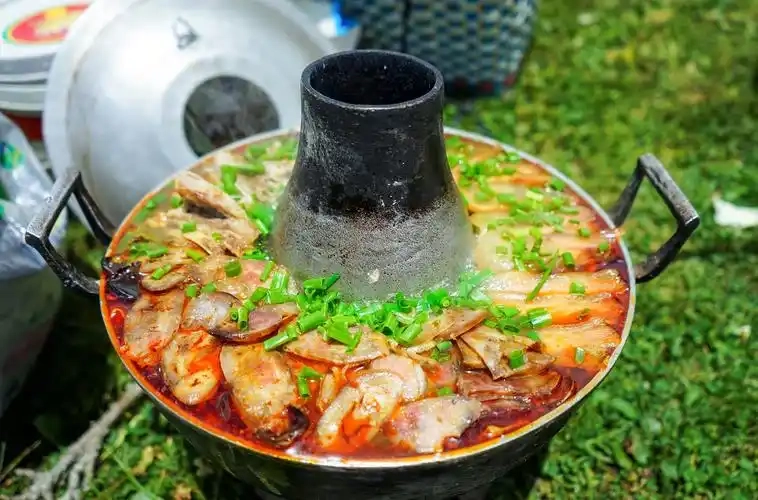The Ancient Flavors of Aba’s Qiang Ethnic Hotpot: A Culinary Journey into Sichuan’s Heart
Introduction:
As a gastronomic enthusiast and practitioner, I am always on the quest to uncover the hidden gems of traditional cuisines that have been passed down through generations. Today, I take you on a culinary journey to the heart of Sichuan, where the Qiang ethnic minority’s hotpot offers a unique and delightful experience that is both warming and flavorful. This is not just a dish; it’s a cultural treasure that reflects the history and lifestyle of the Qiang people.
Origin and Cultural Background:
The Qiang ethnic hotpot, or ‘Qiang Zu Tu Huo Guo’, has its roots deeply embedded in the Aba Tibetan and Qiang Autonomous Prefecture of Sichuan Province. It is more than just a meal; it’s a symbol of communal dining and a celebration of the region’s natural abundance. Historically, the Qiang people have relied on the mountains and forests for sustenance, and their cuisine reflects this close relationship with nature.
Ingredients and Preparation:
The essence of this hotpot lies in its simplicity and the use of local, seasonal ingredients. The traditional method of cooking involves a copper pot, which imparts a unique flavor and retains heat beautifully. The broth is made from a base of chicken or pork stock, simmered for hours to achieve a rich, deep flavor. The star of the show, however, are the wild mushrooms, foraged from the surrounding mountains. These fungi, with their earthy and umami flavors, are the soul of the dish.
Taste and Texture:
The broth is light yet packed with flavor, a perfect balance of savory and umami notes. The wild mushrooms add a layer of complexity, their textures ranging from the tender to the crunchy, depending on the variety. The hotpot is typically accompanied by a variety of vegetables, tofu, and meats, all simmered together to create a symphony of flavors and textures. Each bite is a revelation, with the subtle interplay of ingredients creating a depth of taste that is both comforting and invigorating.
Visual Description:
The appearance of the Qiang ethnic hotpot is as inviting as its taste. The copper pot, with its gleaming surface, sits at the center of the table, steam rising from the bubbling broth. The vibrant colors of the wild mushrooms, the bright green of the vegetables, and the rich browns of the meats create a visual feast that mirrors the culinary one. The pot’s traditional design, often adorned with intricate patterns, adds a touch of elegance and cultural significance to the presentation.
Signature Dishes and Cuisines:
Besides the hotpot itself, the Qiang cuisine offers a variety of dishes that showcase the region’s bounty. Smoked meats, fermented tofu, and a variety of pickled vegetables are common accompaniments. These dishes, when paired with the hotpot, provide a comprehensive taste of Qiang culinary traditions.
Culinary Characteristics:
The Qiang ethnic hotpot is characterized by its use of fresh, local ingredients, the depth of flavor achieved through slow cooking, and the communal aspect of sharing a meal. It is a dish that not only nourishes the body but also the soul, bringing people together in a shared experience of food and culture.
Conclusion:
As a food professional, I am always in awe of the culinary heritage that dishes like the Qiang ethnic hotpot represent. It is more than just a meal; it’s a bridge to the past, a connection to the land, and a celebration of community. The next time you find yourself in Sichuan, do not miss the opportunity to experience this ancient and flavorful tradition for yourself. It is a culinary adventure that will leave you with a taste of history and a heart full of warmth.
